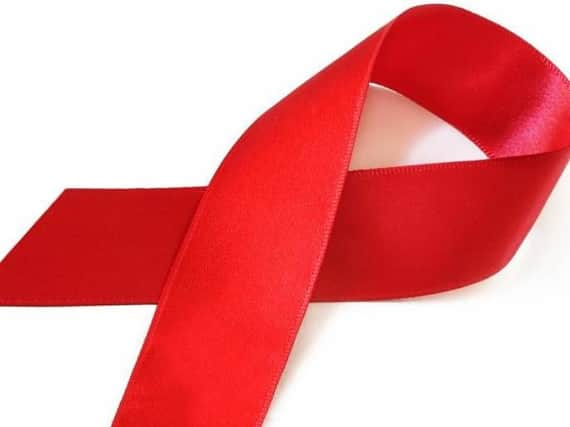Today is World AIDS Day - here's everything you need to know about HIV and AIDS


Held on December 1 every year since 1988, the date remembers more than 36 million people worldwide killed by the illness - as well as the estimated 35.3 million people living with HIV.
Here's all you need to know about HIV and AIDS
* HIV (Human Immunodeficiency Virus) infects cells of the immune system. Infection results in the progressive deterioration of the immune system, breaking down the body's ability to fend off some infections and other diseases. AIDS (Acquired Immune Deficiency Syndrome) refers to the most advanced stages of HIV infection.
Advertisement
Hide AdAdvertisement
Hide Ad* HIV can be transmitted through unprotected sexual intercourse (vaginal or anal) or oral sex with an infected person, transfusions of contaminated blood, the sharing of contaminated needles and syringes or tattooing equipment, through contaminated surgical equipment and between a mother and her baby during pregnancy, childbirth and breastfeeding.
* There are several ways to prevent HIV transmission - safe sex, such as using condoms, getting tested and treated for sexually transmitted infections, including HIV to prevent onward transmission and avoid injecting drugs, or if you do, always use sterile needles and syringes.
* Globally, an estimated 36.7 million people were living with HIV in 2015, and 1.8 million of these were children. The vast majority of people living with HIV are in low- and middle-income countries. An estimated 2.1 million people were newly infected with with HIV in 2015. An estimated 35 million people have died from HIV-related causes so far, including 1.1 million in 2015.
* If the reproduction of HIV stops, then the body's immune cells are able to live longer and provide the body with protection from infections. Effective ART (antiretroviral therapy) results in a reduction in viral load, greatly reducing the risk of transmitting the virus to sexual partners. If the HIV positive partner in a couple is on effective ART, the likelihood of sexual transmission to the HIV-negative partner can be reduced by as much as 96%.
Advertisement
Hide AdAdvertisement
Hide Ad* As of mid-2016, 18.2 million people were receiving ART worldwide.
* Access to HIV testing and medicines should be dramatically accelerated in order to reach the goal of ending AIDS by 2030. HIV testing reach is still limited, as an estimated 40% of people with HIV or over 14 million people remain undiagnosed and don't know their infection status.
* According to 2015 figures 1.8 million children are living with HIV/AIDS - most of these children live in sub-Saharan Africa and were infected through transmission from their HIV-positive mothers during pregnancy, childbirth or breastfeeding.
* Elimination of mother-to-child-transmission is becoming a reality. In 2015, almost 8 out of 10 pregnant women living with HIV – 1.1 million women – received antiretrovirals worldwide. In 2015, Cuba was the first country declared by WHO as having eliminated mother-to-child transmission of HIV and syphilis.